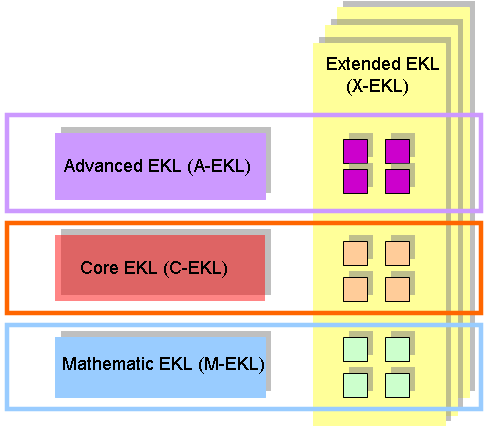
The Engineering Knowledge Language (EKL) is the language used to define the various kinds of Knowledge artifacts available in the different products of the Knowledgeware solution. For a quick access, click the graphic below to access the related documentation.

As shown in the preceding graphic, the Engineering Knowledge Language is declined in 4 different flavors, from the very simple Mathematical language (M-EKL) to the most complete advanced language (A-EKL).
This language groups the language operators and the numerical functions (maths, measures, ...) necessary to express the sets of equations used to valuate parameters in Knowledge Advisor.
C-EKL adds the following language elements:
C-EKL is used in the following Knowledge artifacts that are related to the update process through their parameters:
This language inherits most of the operators, keywords and functions of C-EKL. V5 applications aim at creating design objects enriched by a knowledge type. A-EKL is the level of language to manipulate them as knowledge objects through tightly integrated knowledge artifacts:
A_EKL also provides a full set of functionalities to manipulate V5 features as Knowledge Objects:
This language contains the applicative packages available in EKL and is also the way to add functions to the EKL language by 2 means: